In 2010, Congress passed the Nuclear Forensics and Attribution Act, which created initiatives to support research into determining the source of nuclear or radiological material that has been either confiscated or recovered from a detonated weapon. This allows authorities to identify the origin of the material and piece together how it was obtained and who is responsible for its unauthorized use. Effective attribution requires a robust capability to analyze and characterize samples in a timely manner in order to measure radioisotopes with short half-lives.
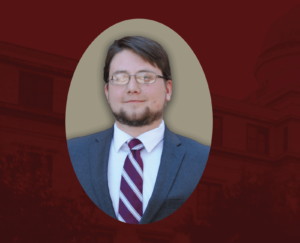
Timothy Jacomb-Hood, a graduate student working with Center for Nuclear Security Science and Policy Initiatives (NSSPI) Deputy Director Dr. Craig Marianno, is working on developing new tools for achieving efficient attribution of these samples. According to Jacomb-Hood, “The result of my research is a new way to triage collected nuclear forensic samples.” He focused on repurposing an existing commercially available, mechanically-cooled High-Purity Germanium (HPGe) detector for measuring the spatial distribution of radioisotopes within a sample.
“I studied this first experimentally, and second through electrodynamic simulations to understand the detector’s response. As a corollary to discovering the importance of knowing the interaction location, I developed a better method to locate the interaction position within the germanium,” said Jacomb-Hood.
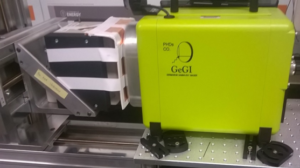
To achieve this, Jacomb-Hood conducted an intensive study of a germanium crystal’s change in response based on where the photon interacted. He used the Germanium Gamma-ray Imager (GeGI), a planar HPGe in his study. He investigated the ability of GeGI for measuring heterogeneous sources in the near field, placed directly on the detector’s faceplate to perform isotopic mapping for application in nuclear forensics. His study revealed that the intrinsic efficiency is strongly dependent on where the photons interacted within the germanium and was found to vary by up to 20% within the sensitive volume of the detector.
After completing the experimental part of his study, Jacomb-Hood further analyzed the GeGI using electrodynamic simulations to improve the sub-pixel position determination. The more accurately the event’s position is known, the more accurately its activity can be measured. Using software post-processing developed through simulations and applied to experimentally collected data, he was able to improve the GeGI’s ability to determine an event’s location by ~20%.
Jacomb-Hood explains that one of the more basic assumptions made with radiation detection is that the detector is uniform, and it does not matter where within it the photon interaction occurs. However, he said, “My research found that our detector had significant efficiency variation across its face and that for small sources close to the detector this spatially variant efficiency needs to be accounted for.”
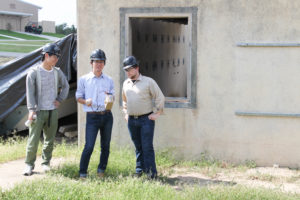
After having successfully defended his thesis in October, Jacomb-Hood will be graduating with his Master of Science degree in nuclear engineering from Texas A&M University in December 2020. He also earned graduate certificates in Nuclear Security and Advanced International Affairs. Upon completion of his coursework, Jacomb-Hood moved to Richland, WA where he completed his graduate research at Pacific Northwest National Laboratory. While there, he worked on in-field gamma radiation imaging for triage of high activity nuclear forensic samples collected in a post-detonation environment. Jacomb-Hood was a part of NNSA Graduate Fellowship Program class of 2019 and supported the Office of Material Disposition at the Savannah River Site where he focused on Material Control and Accountability, Safety Basis, and regulatory requirements. His masters research was funded by the South Carolina Research and Education Foundation’s Nuclear Forensic Graduate Fellowship.
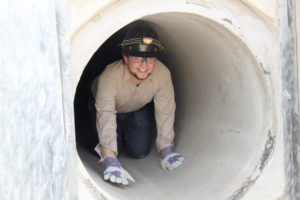
“One of the highlights,” said Jacomb-Hood of his time with NSSPI, “was experiencing Disaster City. It was so much fun being able to crawl into a rubble pile and hide a radioactive source for other students to find.” Graduate students in Dr. Marianno’s research group regularly help set up and conduct field radiation detection exercises at the Texas A&M Engineering Extension Service’s Disaster City training facility.
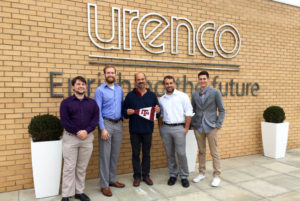
While at Texas A&M, Jacomb-Hood was a teaching assistant for the Radiation Detection and Nuclear Material Measurement class and traveled to England as a part of the International Nuclear Facilities Experience, sponsored by the Department of Energy’s National Nuclear Security Administration. He was elected to both Secretary and then Vice-President of the Texas A&M student chapter of the Institute for Nuclear Materials Management (INMM). He also served on the organizing and planning committee for the Institute of Nuclear Materials Management Safeguards Culture Workshop that Texas A&M hosted in 2016. He is currently seeking employment within the Nuclear Security Enterprise.